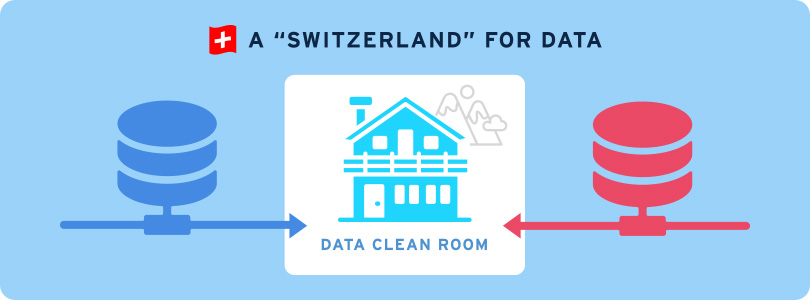Data Clean Rooms: Digital Marketing’s Next Big Move

“No one wants a drill—they want a hole.”
This popular quote was popularized in the 1940s by marketers discussing customer segmentation. It was meant to illustrate different marketing strategies addressing problems or solutions—and that sometimes we confuse the two. With all the hysteria around Google’s announcement that third-party cookies are going to be phased out from Google Chrome in 2021, it would seem like a good time to remind ourselves of the difference between the problems and the solutions that this change will impact.
Undoubtedly, Google Chrome phasing out third-party cookies is disrupting. It says goodbye to the technology that uplifted the industry to what it is today. It introduces complexity and new ad tech and forces the industry to find alternative approaches to achieve the same objective.
Third-party cookies: Nobody actually wants them
While powerful when used properly, third-party cookies are also hard to understand, and they are one of the main reasons why there are so many privacy concerns on the internet.
Even today, most digital marketers barely understand how cookies work—and that is OK. Instead, it’s important to know that installing a script on your website gives you the ability to target customers in many advertising tools including Google, for now. Starting next year, Google Chrome will no longer allow these scripts to work this way. (Safari already does this.) This is what the elimination of third-party cookies means for the industry.
That’s right: It’s time to start rethinking marketing strategy.
Enter “data clean rooms”
Data clean rooms are not a novel concept, but they are the alternative that the industry has been positioning so as to reach targeted audiences. At first sight, this looks like a move with much potential for good.
The idea is to create a private space where two parties can share data to find overlapping audiences, without revealing customer-level data to each other.

Data clean rooms are often referred to as the “Switzerland of data.” This is because two parties will have access to a neutral zone of sorts. In this area, users will be able use customer-level data as an input while getting aggregated, non-personal identifiable audiences as an output.
Google’s Ads Data Hub (ADH)—Google’s data clean room offering—is already in use. We expect Facebook, AWS, and other big players to do the same.
Time to learn SQL
Digital marketers that do not learn the basics of SQL will have a tough time not only executing strategies but also understanding the possibilities for a strategy.
SQL is one of the most-approachable programming languages. It is used for managing data held in a relational database management system, much like that used for data clean rooms. Basic SQL concepts such as JOIN and GROUP BY and understanding datasets at a high-level are going to be necessary toward understanding the possibilities.
There are many SQL resources out there, including those offered by Google via online learning platforms such as Udacity and Coursera.
First-party data
The best digital marketing strategists always have a top-level understanding of their target customers, who they are, and what they want, with first-party data as a foundation. At the core, privacy is much more manageable when customers and brands are talking to each other. In relation, we encourage you to also read our post on the end of third-party cookies and the implications of such on digital marketing strategies.
Possibilities for the future
In theory, data clean rooms pave the way for exciting opportunities. For example, organizations can combine their data to build better audiences. Imagine Nike and Coca-Cola creating audiences based on the intersection of their first-party data! Perhaps McDonald’s and Baskin-Robbins; or McDonald’s, Baskin-Robbins, AND Nike?
In theory, this sounds exciting. How effective this ad tech will be, especially compared to what we are used to now, remains to be seen. For more information, please contact us at hello@ayudanteinc.com.

